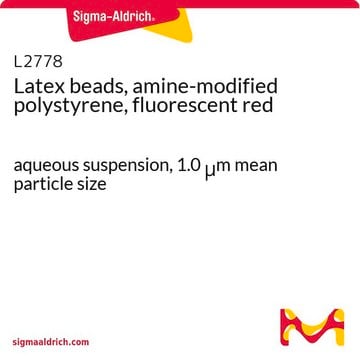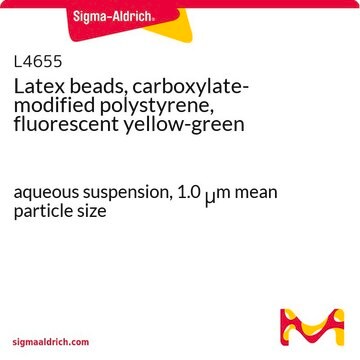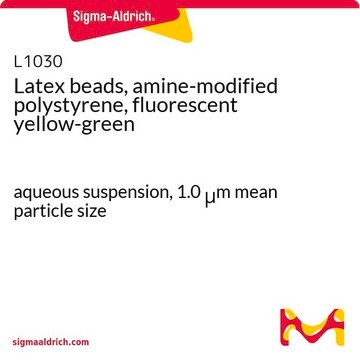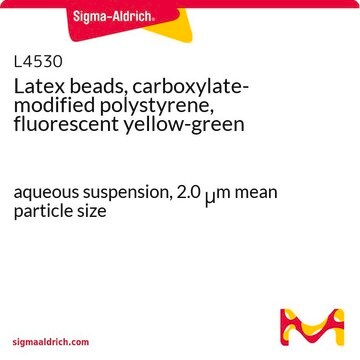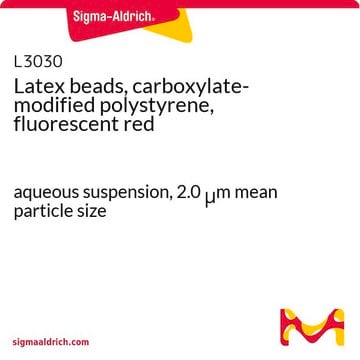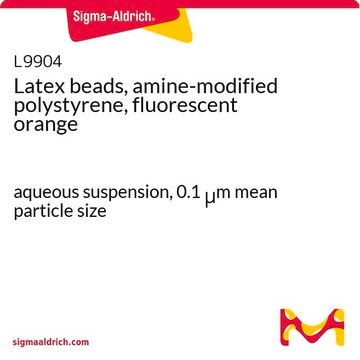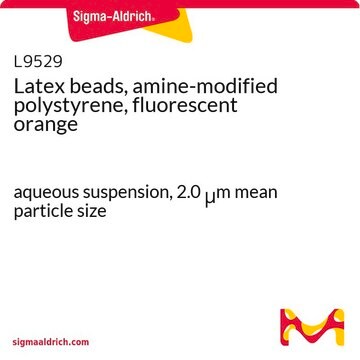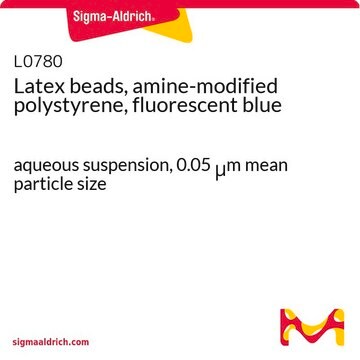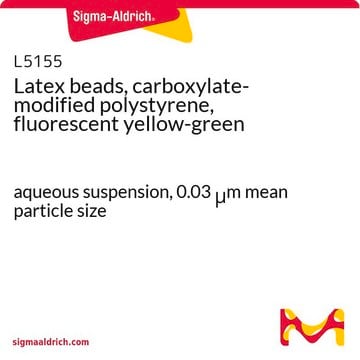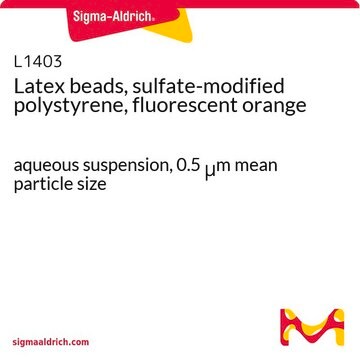L9654
Latex beads, amine-modified polystyrene, fluorescent orange
aqueous suspension, 1.0 μm mean particle size
Sign Into View Organizational & Contract Pricing
All Photos(1)
About This Item
Recommended Products
form
aqueous suspension
composition
Solids, 2.4-2.6%
technique(s)
cell based assay: suitable
mean particle size
1.0 μm
fluorescence
λex ~520 nm; λem ~540 nm
application(s)
cell analysis
Looking for similar products? Visit Product Comparison Guide
Application
Amine-modified polystyrene latex beads (fluorescent orange) have been used to develop an electrochemical nitrite nanosensor as well as to validate a pharyngeal aspiration technique for exposing the mouse lung to respirable particles.
They have also been used:
- to test nanofiber filtration efficiency
- in the preparation of bilayer tissue-simulating phantoms, which are artificial materials used in biomedical optical instrumentation
- to copolymerize collagen coated stiff polyacrylamide gels to seed cancer cells for traction force microscopy
Storage Class Code
10 - Combustible liquids
WGK
WGK 2
Flash Point(F)
Not applicable
Flash Point(C)
Not applicable
Certificates of Analysis (COA)
Search for Certificates of Analysis (COA) by entering the products Lot/Batch Number. Lot and Batch Numbers can be found on a product’s label following the words ‘Lot’ or ‘Batch’.
Already Own This Product?
Find documentation for the products that you have recently purchased in the Document Library.
Customers Also Viewed
Recycled PET nanofibers for water filtration applications
Zander N, et al.
Materials, 9(4), 247-247 (2016)
MMP proteolytic activity regulates cancer invasiveness by modulating integrins
Das A, et al.
Scientific reports, 7(1), 14219-14219 (2017)
Development of thin skin mimicking bilayer solid tissue phantoms for optical spectroscopic studies
Nivetha KB and Sujatha N
Biomedical Optics Express, 8(7), 3198-3212 (2017)
Development of thin skin mimicking bilayer solid tissue phantoms for optical spectroscopic studies.
K Bala Nivetha et al.
Biomedical optics express, 8(7), 3198-3212 (2017-07-19)
Yu Long Han et al.
Nature physics, 16(1), 101-108 (2020-09-10)
Sculpting of structure and function of three-dimensional multicellular tissues depend critically on the spatial and temporal coordination of cellular physical properties, yet the organizational principles that govern these events, and their disruption in disease, remain poorly understood. Using a multicellular
Our team of scientists has experience in all areas of research including Life Science, Material Science, Chemical Synthesis, Chromatography, Analytical and many others.
Contact Technical Service